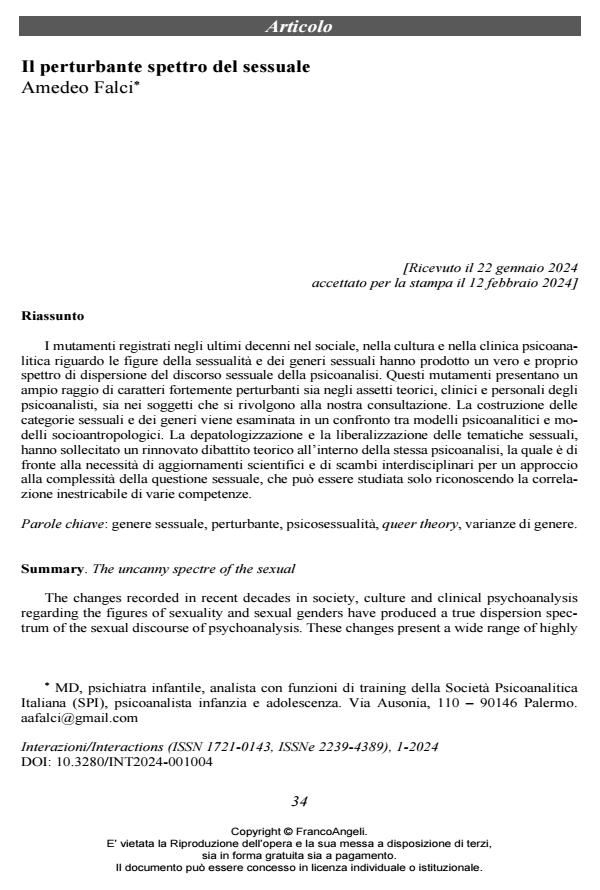Il perturbante spettro del sessuale
Titolo Rivista INTERAZIONI
Autori/Curatori Amedeo Falci
Anno di pubblicazione 2024 Fascicolo 2024/1
Lingua Italiano Numero pagine 23 P. 34-56 Dimensione file 247 KB
DOI 10.3280/INT2024-001004
Il DOI è il codice a barre della proprietà intellettuale: per saperne di più
clicca qui
Qui sotto puoi vedere in anteprima la prima pagina di questo articolo.
Se questo articolo ti interessa, lo puoi acquistare (e scaricare in formato pdf) seguendo le facili indicazioni per acquistare il download credit. Acquista Download Credits per scaricare questo Articolo in formato PDF

FrancoAngeli è membro della Publishers International Linking Association, Inc (PILA)associazione indipendente e non profit per facilitare (attraverso i servizi tecnologici implementati da CrossRef.org) l’accesso degli studiosi ai contenuti digitali nelle pubblicazioni professionali e scientifiche
I mutamenti registrati negli ultimi decenni nel sociale, nella cultura e nella clinica psicoana-litica riguardo le figure della sessualità e dei generi sessuali hanno prodotto un vero e proprio spettro di dispersione del discorso sessuale della psicoanalisi. Questi mutamenti presentano un ampio raggio di caratteri fortemente perturbanti sia negli assetti teorici, clinici e personali degli psicoanalisti, sia nei soggetti che si rivolgono alla nostra consultazione. La costruzione delle categorie sessuali e dei generi viene esaminata in un confronto tra modelli psicoanalitici e mo-delli socioantropologici. La depatologizzazione e la liberalizzazione delle tematiche sessuali, hanno sollecitato un rinnovato dibattito teorico all’interno della stessa psicoanalisi, la quale è di fronte alla necessità di aggiornamenti scientifici e di scambi interdisciplinari per un approccio alla complessità della questione sessuale, che può essere studiata solo riconoscendo la correla-zione inestricabile di varie competenze.
Parole chiave:genere sessuale, perturbante, psicosessualità, queer theory, varianze di genere.
Amedeo Falci, Il perturbante spettro del sessuale in "INTERAZIONI" 1/2024, pp 34-56, DOI: 10.3280/INT2024-001004